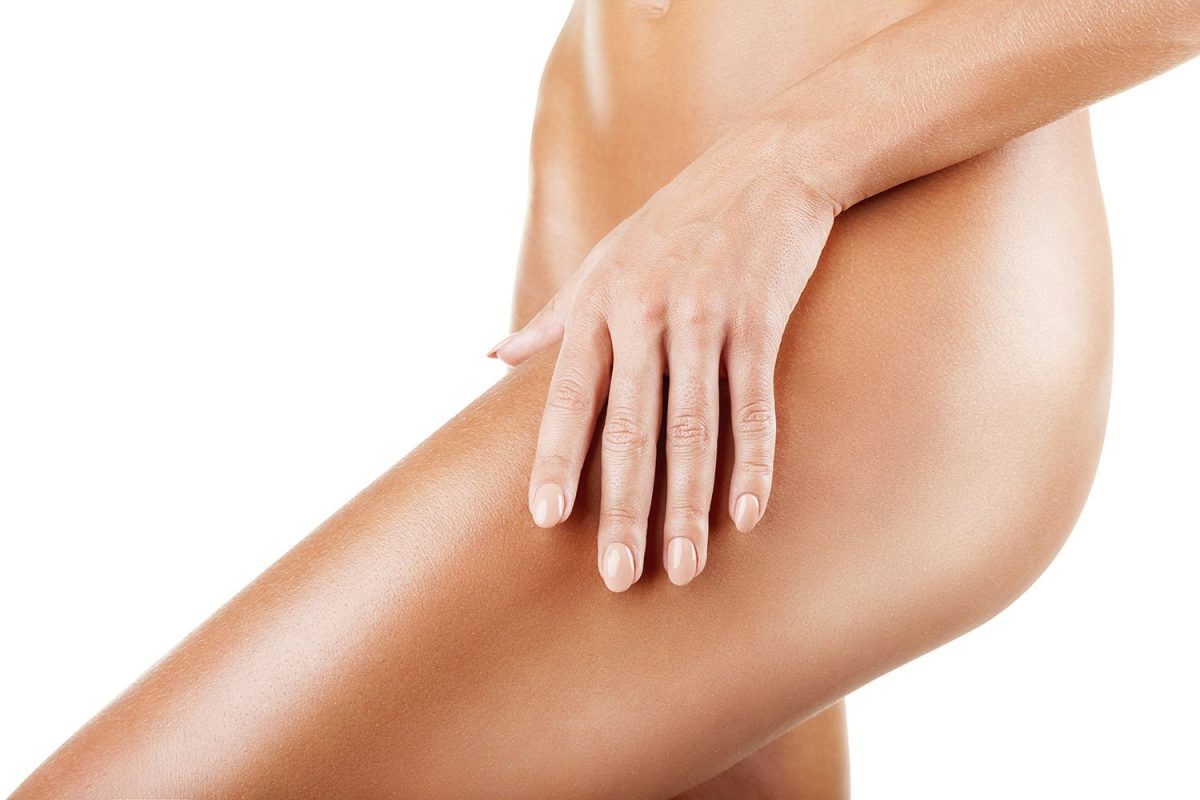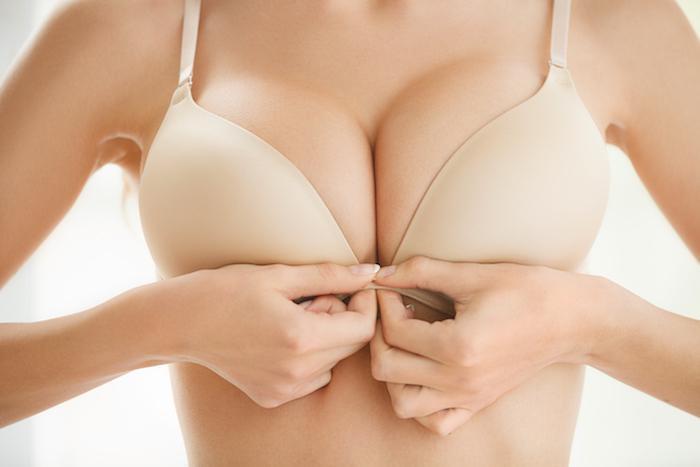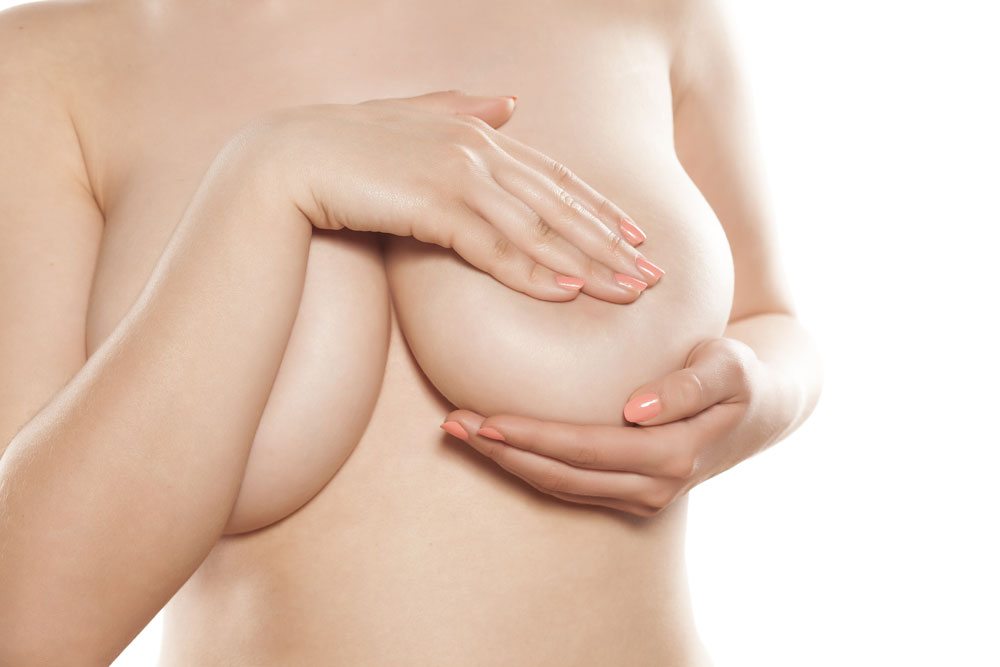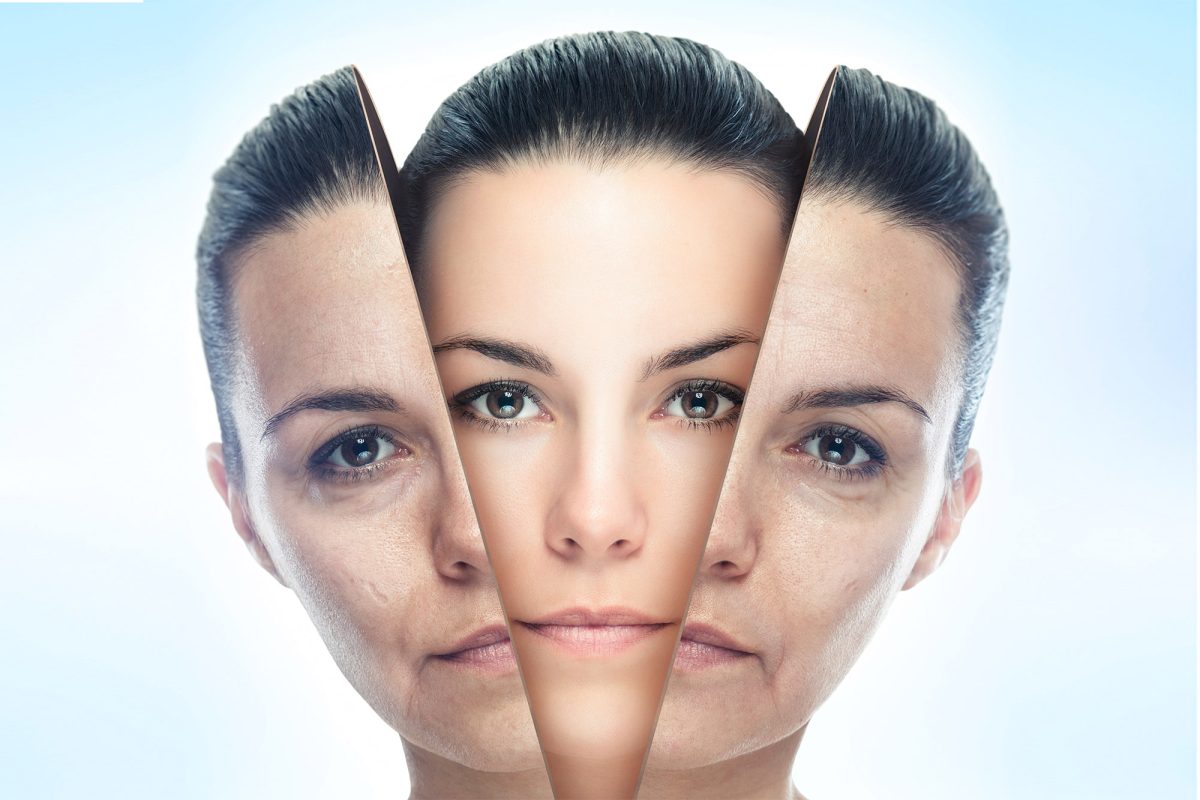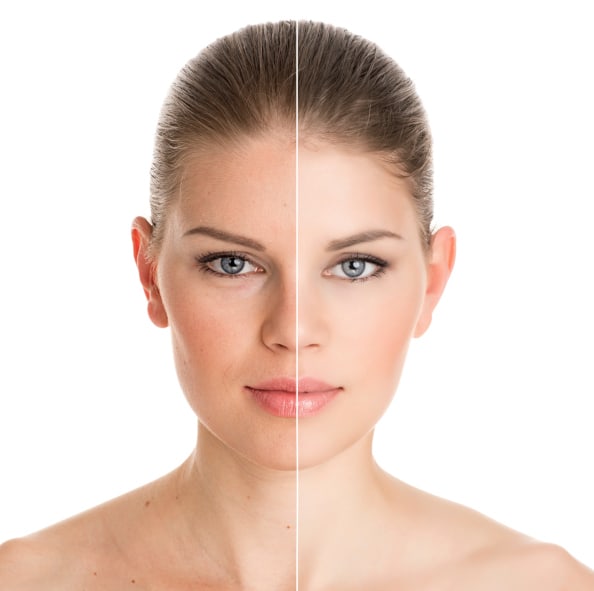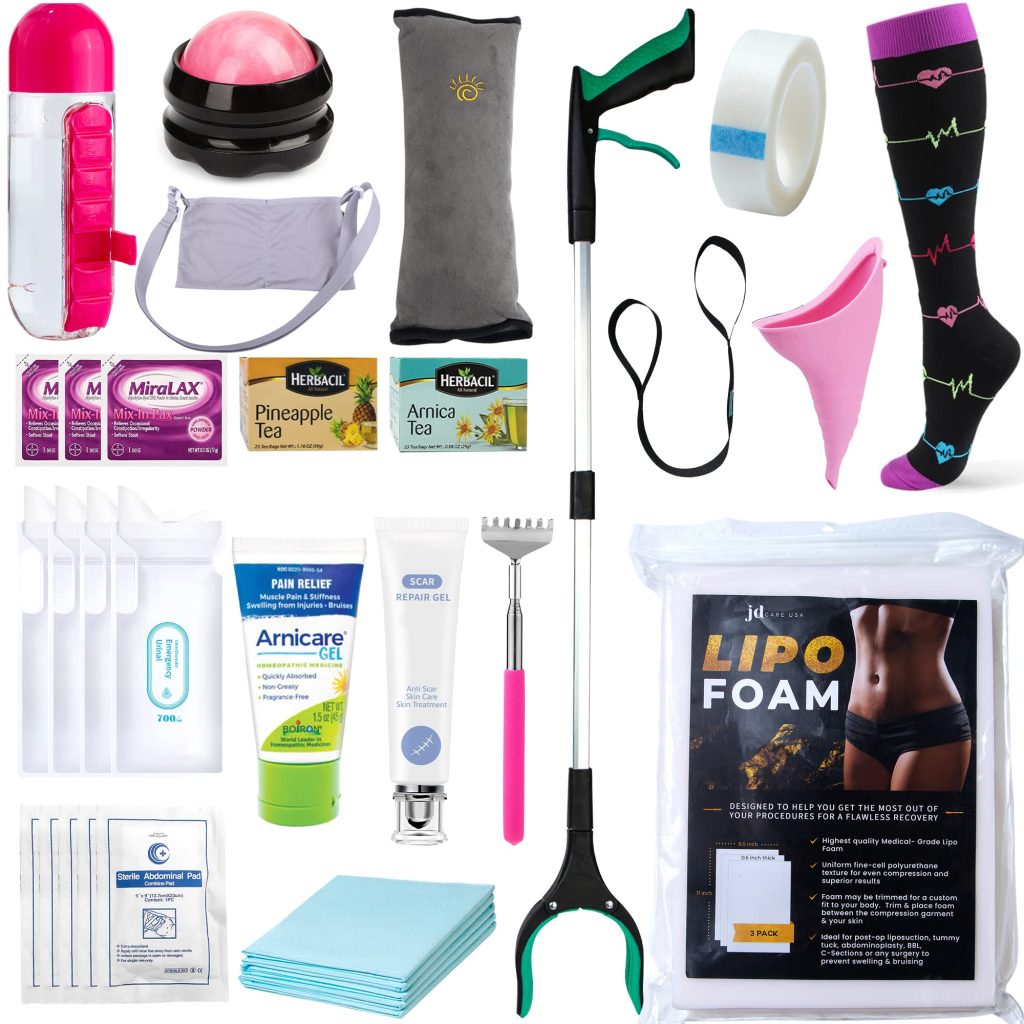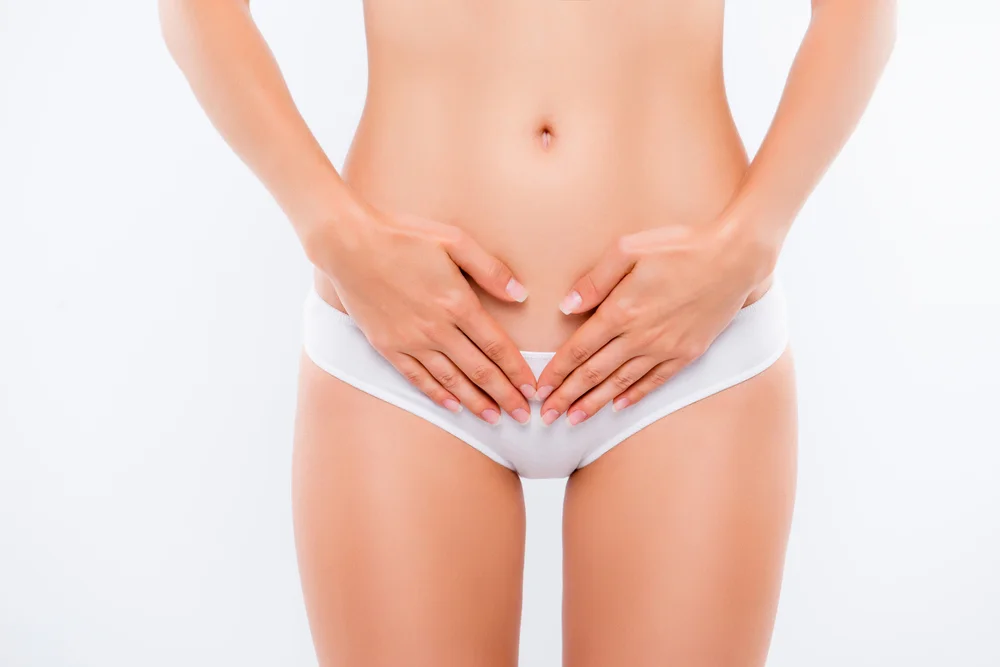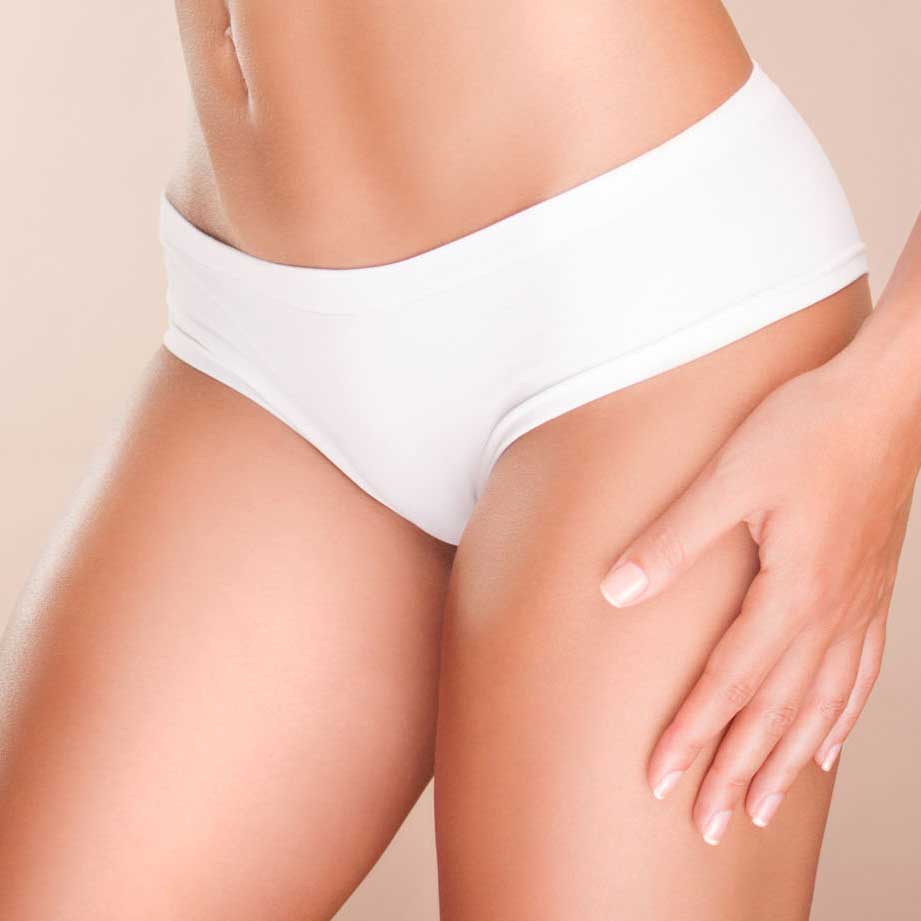Understanding Cellulite and Its Causes
Cellulite Defined
Cellulite is not just regular fat. It’s a specific type of fat deposit. These deposits push against the connective tissue beneath the skin. This action creates the well-known dimpled appearance. You often see it on thighs, buttocks, and abdomen.
The structure of cellulite differs from other fat because of its puckered look. This look results from fat cells pushing up against the skin. Meanwhile, fibrous bands pull down. This dynamic leads to the uneven surface we associate with cellulite.
Genetic Factors
Genetics play a significant role in cellulite development. If your family members have cellulite, chances are higher you might too. It’s not just about the fat cells but also about the skin’s thickness and elasticity.
Hormones also contribute significantly to cellulite formation. Estrogen, in particular, can influence how fat is distributed in the body. This hormone might explain why women are more prone to developing cellulite than men.
Hormonal Influences
Estrogen levels affect cellulite severity. They can alter blood flow to the connective tissue and fat layers under the skin. Reduced blood flow means less oxygen and nutrients reach these areas. Over time, collagen breaks down. The skin becomes less elastic and more likely to show cellulite.
Other hormones like insulin and cortisol can also impact adipose tissue growth and distribution. These factors together highlight how complex cellulite’s pathophysiology is.
Lifestyle Factors
Lifestyle choices can influence cellulite development or severity as well. Poor diet, lack of exercise, and smoking can all worsen its appearance. These factors lead to increased unwanted fat accumulation and weaker circulatory systems.
Regular exercise helps by reducing overall fat levels in the body. A healthy diet supports skin health and reduces inflammation that could exacerbate cellulite appearance.
Gender Differences
Women experience cellulite more frequently than men due to differences in collagen fiber structure between genders. In women, these fibers run vertically, making it easier for fat cells to push through and create dimples.
Men’s fibers crisscross more effectively, providing a smoother appearance even when fat accumulates.
Research-Backed Treatments That Work
Acoustic Wave Therapy
Acoustic wave therapy stands out in clinical trials. It uses sound waves to target cellulite, promoting collagen production and tissue elasticity. Studies show patients see improvements after a series of treatment sessions. However, achieving optimal results usually requires maintenance sessions.
Laser Treatments
Laser treatments have gained popularity for their effectiveness in cellulite reduction. This approach involves targeting the treatment area with laser energy, breaking down fat cells and stimulating collagen production. Most subjects report noticeable changes after a single treatment, but several sessions are recommended for lasting results.
Subcision Techniques
Subcision is a minimally invasive procedure where a needle is used to break fibrous bands causing skin dimpling. Clinical practice suggests significant improvements in the appearance of cellulite with this method. Patients often need multiple sessions spread over months to see the full benefits.
Vacuum-Assisted Release
Vacuum-assisted tissue release combines suction and massage techniques to increase circulation and lymphatic drainage in the treatment area. Evidence from studies indicates that this can reduce cellulite appearance effectively, especially when combined with other treatments.
Non-Invasive Alternatives
Non-invasive treatments like Endermologie® and ionithermie have mixed reviews regarding their efficacy. While some patients report satisfaction with the results, others notice minimal improvement. These methods typically require ongoing sessions to maintain any visible reduction in cellulite.
Exploring Acoustic Wave Therapy
Sound Waves
Acoustic wave therapy utilizes sound waves to target cellulite. These waves penetrate the skin, reaching the tough bands beneath that cause the dimpled appearance of cellulite. By breaking up these bands, the therapy improves blood flow and stimulates collagen production. This leads to smoother skin.
Patients often feel a vibrating sensation during treatment. It’s non-invasive and considered quite safe. Most report minimal discomfort, likening it to a deep tissue massage.
Treatment Regimen
A typical acoustic wave therapy plan involves multiple sessions. On average, patients undergo about 6 to 12 treatments for visible improvements. Each session lasts around 30 minutes, spaced a week apart.
The number of treatments varies with the severity of cellulite and individual responses. Some may see changes sooner, while others might need additional sessions for optimal results.
Patient Satisfaction
Most patients express high satisfaction with acoustic wave therapy. They notice firmer, smoother skin after completing their treatment regimen. The improvement in skin texture and reduction in cellulite appearance boosts confidence for many.
However, it’s important to have realistic expectations. While significant improvements occur, complete cellulite elimination is rare.

Long-Term Results
For long-term maintenance, some patients opt for follow-up treatments. These are usually less frequent but help sustain the initial results. Lifestyle factors like diet and exercise also play a crucial role in maintaining outcomes.
Advances in Laser Removal
Laser Technology
Laser treatments, particularly Cellulaze™, have marked a significant improvement in the battle against cellulite. They work by directing laser energy to the affected areas, targeting the fibrous bands beneath the skin that cause cellulite’s dimpled appearance.
This technology not only breaks up these bands but also promotes collagen production. The result is a smoother surface and thicker skin. It’s a process that tackles cellulite from its roots, offering more than just superficial changes.
Procedural Details
Undergoing a Cellulaze™ treatment involves precise steps to ensure safety and effectiveness. Patients typically receive local anesthesia to minimize discomfort during the procedure. A tiny incision is made, through which a small laser-tipped device is inserted.
This device then emits laser energy at varying depths and directions. This strategic approach helps disrupt fat lobules while encouraging skin thickness. Recovery time varies but generally involves minimal downtime, allowing patients to return to their routines swiftly.
However, like any medical procedure, there are potential side effects. These can include bruising, swelling, or temporary soreness at the treatment site.
Effectiveness Comparison
When comparing Cellulaze™ to other cellulite removal treatments such as acoustic wave therapy discussed previously, several factors stand out. Firstly, laser treatments offer a direct approach by targeting the structural causes of cellulite – the fibrous septa and fat lobules beneath the skin.
The results from laser treatments tend to be long-lasting, with many patients seeing improvements for a year or more post-procedure. This longevity is attributed to the method’s ability to induce biological changes in the skin’s structure, unlike some other treatments that may only offer temporary cosmetic enhancements.
Moreover, studies have shown that patients experience an increase in skin thickness and elasticity following laser treatments—factors crucial for maintaining cellulite-free appearances over time.
Subcision Technique for Cellulite
Procedure Overview
Subcision, notably through the use of Cellfina™, directly targets the structural causes of cellulite. It involves a minimally invasive process. This technique focuses on releasing fibrous bands beneath the skin that cause cellulite depressions.
The procedure is precise. It targets subcutaneous fat and tissue in areas like the buttocks. Doctors use a small needle to cut these fibrous bands. This action promotes smoother skin surface.
Durability of Results
One key advantage of this method is its lasting impact. Patients often see improvements lasting up to two years. This durability sets it apart from other cellulite treatments.
The long-term effects are attributed to the direct addressing of cellulite’s structural causes. By releasing the fibrous bands, subcision prevents immediate recurrence of dimpling.
Patient Experience
Patients’ experiences vary, but many report minimal pain during the procedure. Local anesthesia is typically applied to reduce discomfort.
Downtime is usually short, with most returning to daily activities quickly. Satisfaction rates are high among those who choose subcision for cellulite removal. They appreciate both the effectiveness and the minimal invasiveness of the treatment.
In comparison to advances in laser removal discussed earlier, subcision offers a unique approach by mechanically altering the under-skin structure causing cellulite depressions rather than targeting cutaneous microcirculation or surface-level fat deposits alone.
Vacuum-Assisted Tissue Release
Process Overview
Vacuum-assisted precise tissue release takes a modern approach to cellulite reduction. Unlike traditional suction methods, it targets the structural causes of cellulite more directly.
This technique uses vacuum suction to apply biomechanical forces on the fibrous bands beneath the skin. These bands pull down the skin, creating dimples characteristic of cellulite. The vacuum’s pressure breaks up these fibrous septa, allowing for smoother skin surface. It promotes lymphatic drainage and enhances blood flow, which are crucial for healthy skin.
Effectiveness
Studies show this method significantly reduces cellulite appearance. Patients often see immediate improvements, with more pronounced results over several sessions.
The effectiveness lies in its ability to manipulate connective tissue and stimulate muscle contraction beneath the skin. This dual action not only diminishes cellulite but can also lead to subtle volume loss in treated areas, contributing to a more contoured appearance. Results can last from six months to a year, depending on individual lifestyle and genetic factors.
Safety Profile
Safety is a top priority with vacuum-assisted treatments. Side effects are minimal and typically include temporary bruising or swelling at the treatment site.
Recovery time is short, allowing patients to return to daily activities almost immediately. It stands out as a non-invasive alternative to surgical options like subcision technique mentioned previously. By avoiding incisions, it reduces the risk of infection and complications associated with surgery.
Recovery Insights
Patients appreciate the low downtime associated with vacuum-assisted tissue release. Most resume normal activities within a day.
Post-treatment care involves staying hydrated and avoiding strenuous exercise for a brief period. These simple steps help maximize treatment benefits and ensure a smooth recovery process.
Lifestyle Changes and Their Impact
Weight Management
Managing weight plays a crucial role in reducing the visibility of cellulite. It doesn’t remove the condition but can make a significant difference.
Adult women often notice cellulite severity fluctuates with weight changes. Losing excess body fat may decrease the pressure on connective tissues, making depressions less pronounced. However, it’s important to approach this healthily. Rapid weight loss can actually worsen the look of cellulite by losing skin elasticity.
Muscle Building
Building muscle is another effective strategy for minimizing the appearance of cellulite. Stronger muscles under the skin can help smooth out its surface.
Specific exercises like squats, lunges, and leg presses target areas commonly affected by cellulite. These activities increase muscle mass, offering a firmer base that reduces the dimpled effect. Consistency is key; people should integrate these exercises into their regular fitness routines for noticeable improvement over time.
Balanced Diet
A balanced diet supports overall skin health, potentially impacting cellulite appearance. Foods rich in antioxidants, vitamins, and minerals promote skin elasticity and hydration.
Incorporating fruits, vegetables, whole grains, and lean proteins into daily meals can improve skin texture and firmness. Reducing intake of processed foods and sugars may prevent further accumulation of fatty deposits contributing to cellulite.
Hydration
Hydration is essential for maintaining healthy skin that can resist the formation of cellulite. Drinking plenty of water helps flush out toxins that may contribute to fat accumulation.
It also keeps the skin hydrated from the inside out, enhancing its elasticity and smoothness. Adults should aim for at least 8 glasses of water per day to support optimal skin health.
Investigating Other Treatment Potentials
Radiofrequency Methods
Radiofrequency has emerged as a promising method for cellulite reduction. This medical procedure involves using energy waves to heat the dermis and underlying tissue in the target area. It aims to stimulate collagen production, which can improve skin texture and elasticity.
Researchers are still exploring its full potential. They believe it could offer a more permanent solution to cellulite. However, the effectiveness varies among patients. Some see significant improvements, while others notice minimal change. The key is ongoing study to understand why this happens.
Carboxytherapy Effects
Carboxytherapy involves injecting carbon dioxide gas beneath the skin’s surface. It targets the affected area directly. The theory is that this will increase blood flow and improve skin’s appearance.
The effects of carboxytherapy are often temporary. Patients may need multiple sessions to maintain results. There’s also a risk of minor adverse events like bruising or discomfort at the injection site.
Creams and Lotions
The market is flooded with creams and lotions claiming to reduce cellulite. These products often contain ingredients meant to target fat deposits and improve skin firmness.
However, evidence on their effectiveness is mixed. Some studies show slight improvements, while others find no benefit at all. It seems that these topical agents may only offer superficial changes.
Realistic Expectations
Setting realistic expectations is crucial when considering cellulite removal treatments. No single treatment guarantees complete cellulite eradication. The etiopathogenesis of cellulite is complex, involving factors beyond what most treatments can address.
Patients should understand that results may vary. For some, a combination of treatments might be necessary for optimal outcomes.
Guidance from Dermatologists
Consultation Importance
Dermatologists play a critical role in cellulite removal treatments. They assess individual skin conditions and cellulite severity. This personalized approach ensures that the treatment plan is effective and safe.
Patients benefit greatly from a dermatologist’s expertise. These specialists understand the complexities of the dermis and how it affects skin appearance. They can determine the best course of action, whether it involves topical agents, cosmetic procedures, or lifestyle changes.
Treatment Monitoring
Regular follow-ups with a dermatologist are essential for monitoring progress. They can adjust treatment strategies based on how well the skin responds. This tailored approach helps achieve better results over time.
Dermatologists also measure improvements in dermal thickness and skin laxity. Such metrics offer tangible evidence of treatment efficacy. They might use advanced imaging techniques to visualize changes in the skin surface.
Post-Treatment Care
After undergoing cellulite removal treatments, dermatologist-recommended care is crucial. It often includes applying retinol creams to enhance collagen production. This helps maintain the skin’s improved appearance.
Lifestyle adjustments are also advised to support long-term results. Dermatologists may suggest dietary changes or exercise routines to reduce thigh circumference further. These recommendations aim to prevent cellulite from reappearing.
Lifestyle Adjustments
Maintaining results requires more than just medical treatments. It involves adopting healthier habits as well. Dermatologists emphasize the importance of regular physical activity and balanced nutrition.
They advise against smoking and excessive alcohol consumption, as these can worsen skin laxity and overall health. Staying hydrated and protecting the skin from sun damage are also key practices.
Summary
Cellulite removal has evolved, offering you effective solutions from acoustic wave therapy to laser treatments and subcision techniques. Each method, backed by research, targets cellulite’s root causes, promising smoother skin. Lifestyle changes play a crucial role too, enhancing treatment outcomes and preventing future cellulite formation. Trust in these advancements and expert guidance to navigate your options confidently.
Choosing the right cellulite treatment depends on your specific needs and goals. Consulting with a dermatologist can provide personalized advice, ensuring you select the most suitable approach. Ready to say goodbye to cellulite? Reach out to a professional today and take the first step towards smoother, more confident skin.
Frequently Asked Questions
What causes cellulite and how common is it?
Cellulite is caused by fat deposits pushing through the connective tissue beneath the skin, affecting 80-90% of women at some point in their lives. It’s a common condition that’s more prevalent in females due to differences in fat distribution, muscle, and connective tissue structure.
Are there any research-backed treatments for cellulite removal?
Yes, several treatments have shown effectiveness in reducing cellulite, including acoustic wave therapy, laser removal techniques, subcision, and vacuum-assisted tissue release. These methods have been supported by research to improve the appearance of cellulite.
How does Acoustic Wave Therapy work for cellulite?
Acoustic Wave Therapy uses sound waves to break up the connective tissue bands that cause the dimpling effect of cellulite, improving skin texture and elasticity. This non-invasive treatment stimulates collagen production and enhances blood circulation in the treated areas.
Can laser treatments effectively remove cellulite?
Laser treatments target cellulite by breaking down fat cells and stimulating collagen production to improve skin elasticity and reduce dimpling. Advances in technology have made laser removal a popular choice for its effectiveness in achieving smoother skin.
What is Subcision technique in treating cellulite?
Subcision involves using a needle to break up fibrous bands beneath the skin that contribute to cellulite’s dimpled appearance. This minimally invasive procedure can result in smoother skin by releasing the tension of these bands.
How do lifestyle changes impact cellulite reduction?
Incorporating healthy lifestyle changes such as a balanced diet, regular exercise, and adequate hydration can positively impact cellulite reduction. These changes help decrease body fat levels and improve overall skin health, potentially reducing the visibility of cellulite.
Should I consult a dermatologist for my cellulite treatment?
Yes, consulting with a dermatologist is advisable to determine the most appropriate treatment plan for your specific case of cellulity. Dermatologists can provide expert guidance on effective treatments based on your individual needs and health condition.







